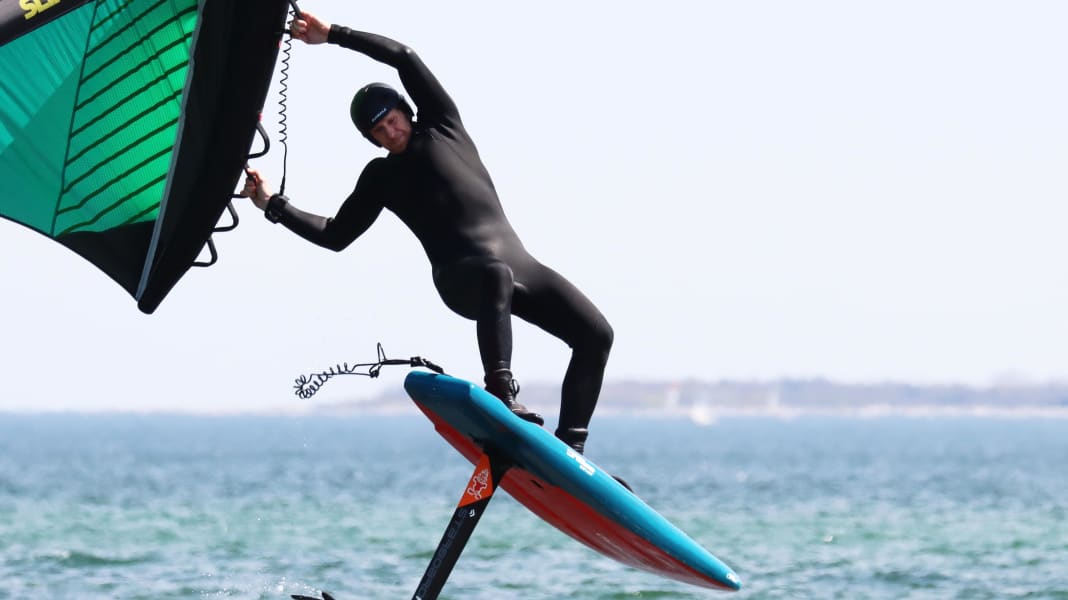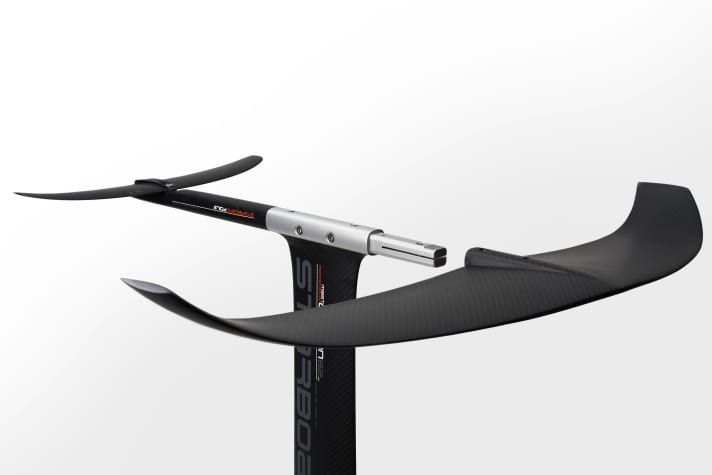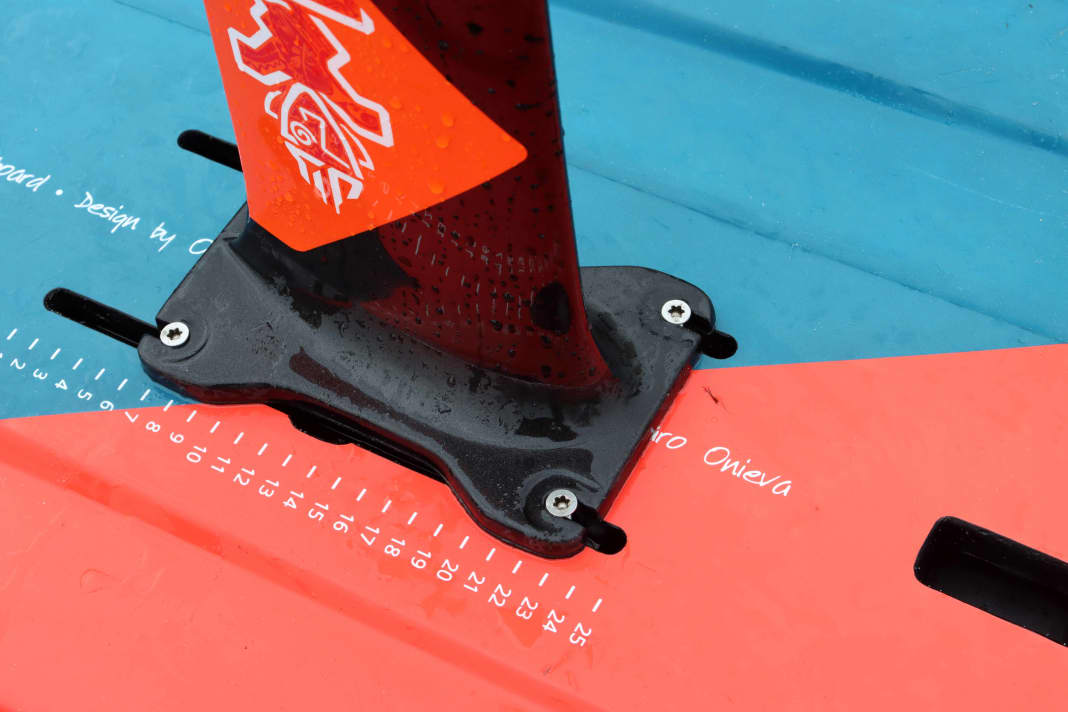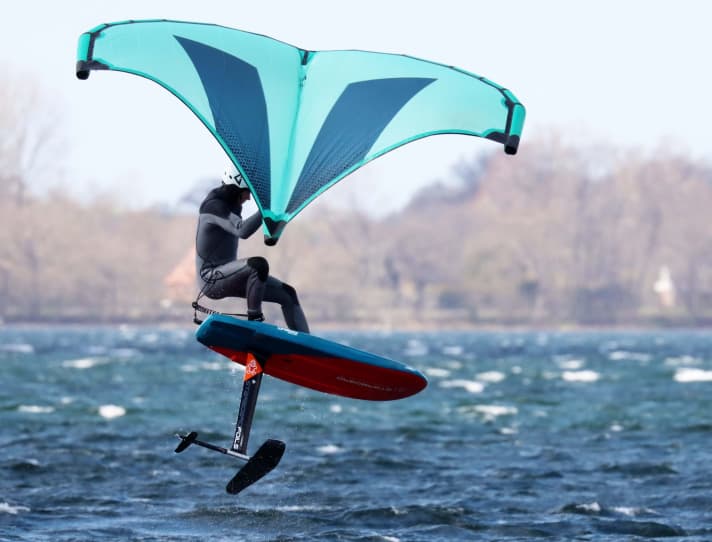
Recklessness? The Starboard E-Type Foil on land
At 3.13 kilos, the Starboard E-Type Foil with the 82mm carbon mast is indeed extremely light. This is made possible by the so-called "prepreg construction", in which the individual carbon layers are pre-impregnated with resin, leaving little or no excess resin (=weight) in the carbon layers. The Quik Lock system is at least as interesting as the construction method. Normally, the rear wing and fuselage remain permanently connected, the wings are then simply attached to the mount on the mast.

One turn with a screwdriver is all it takes to fix it in place. An integrated threaded screw pushes the horizontally divided mounting surface apart and clamps the sashes in place. This means that it only takes a few seconds to fit the sashes. In the test, this worked perfectly at the beginning, but over time the connection of the front wing at the fuselage got a little play - during longer sessions you had to tighten it from time to time. The angle of the rear wing can be adjusted using two screws and can therefore be set for more lift and more speed.
In the picture gallery you can see all the features of the Starboard E-Type Foil. Click through!






The E-Type wing set is available in two sizes - with a 1300 front wing or the 1700 front wing that we tested. The "Razr 250" backwind is identical for both versions and is also made of carbon fibre. The E-Type wing set, consisting of front and back wing, costs 699 and 799 euros respectively. In addition, you can choose from two mast sets - either the aluminium mast (72 or 82 cm length; 489 to 539 euros) or the monolithic carbon mast in 72/82/92 or 102 centimetres for 1199 to 1399 euros.

On the water:
Attach the wing, tighten one turn, done - no other foil is faster on the water than the Starboard foil. The E-Type 1700 produces a pleasing amount of power when pumping and can be made to fly very early with the right pumping technique. The short fuselage supports pumping over the foil well, and the boards we used with the E-Type Wing Set were always quite agile around the transverse axis ("nose up, nose down" axis). The top speed of the E-Type is rather moderate. Although the wonderfully light foil offers enough speed potential for the first jumps and freestyle tricks, when powered up you can already feel a limit at just over 30 km/h in the form of increasing resistance. On the straights, the E-Type 1700 is quite sensitive to ride, it is not as stable as other high-aspect wings of this size. It is rather lively in the water around both the longitudinal and the transverse axis, but you have to be sensitive when manoeuvring and powered up in chop - a characteristic that is less suitable for wing beginners.
Conclusion:
The Starboard E-Type offers light and shade. It takes off early, is light and efficient when pumping, but doesn't seem particularly easy to ride. The Quik Lock system is a great idea, but it doesn't seem to be fully developed yet.
Weight, power at low-end, pumps
Control
Connection to the front wing gets play
You will find many basics about foil HERE .
